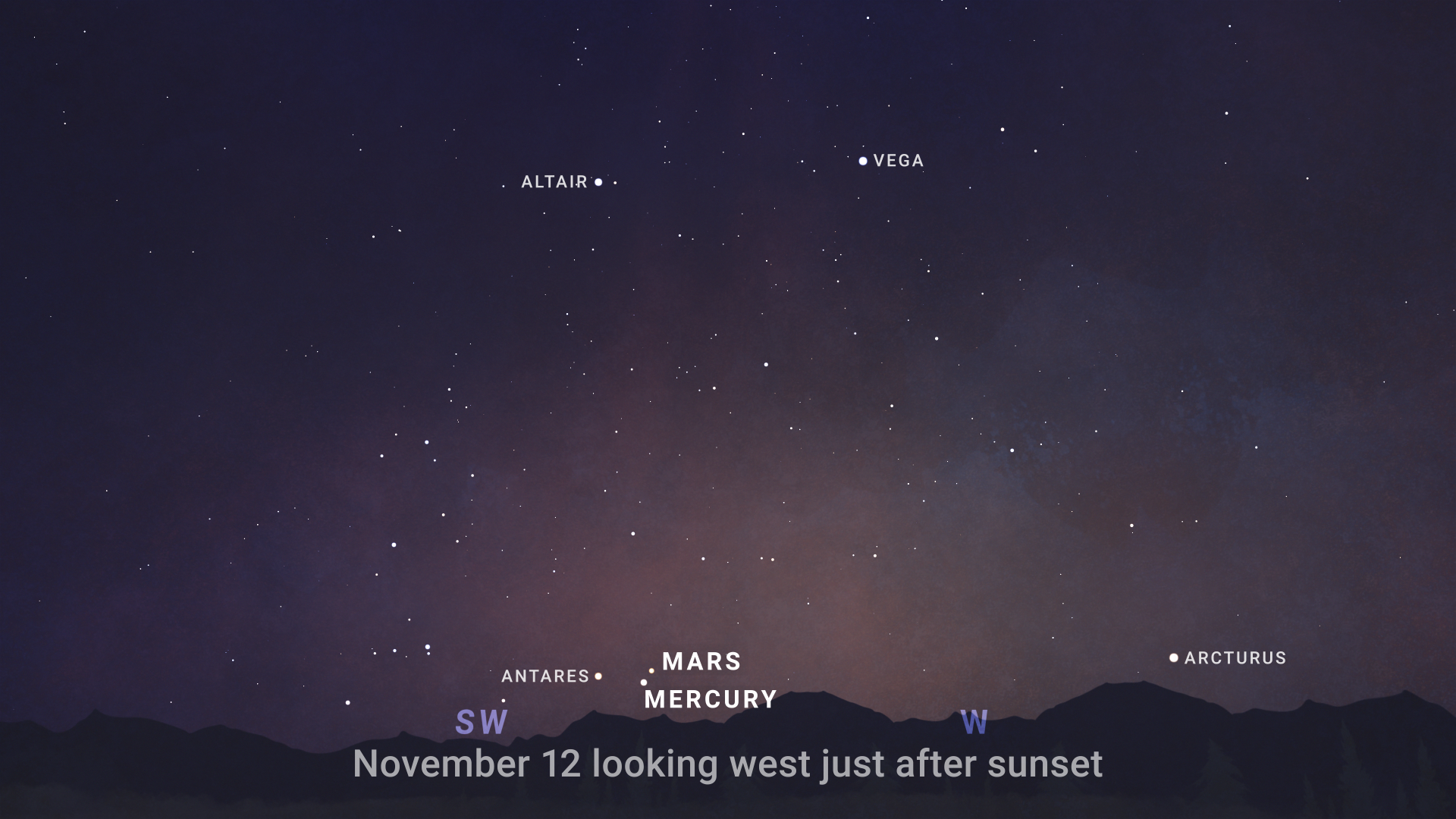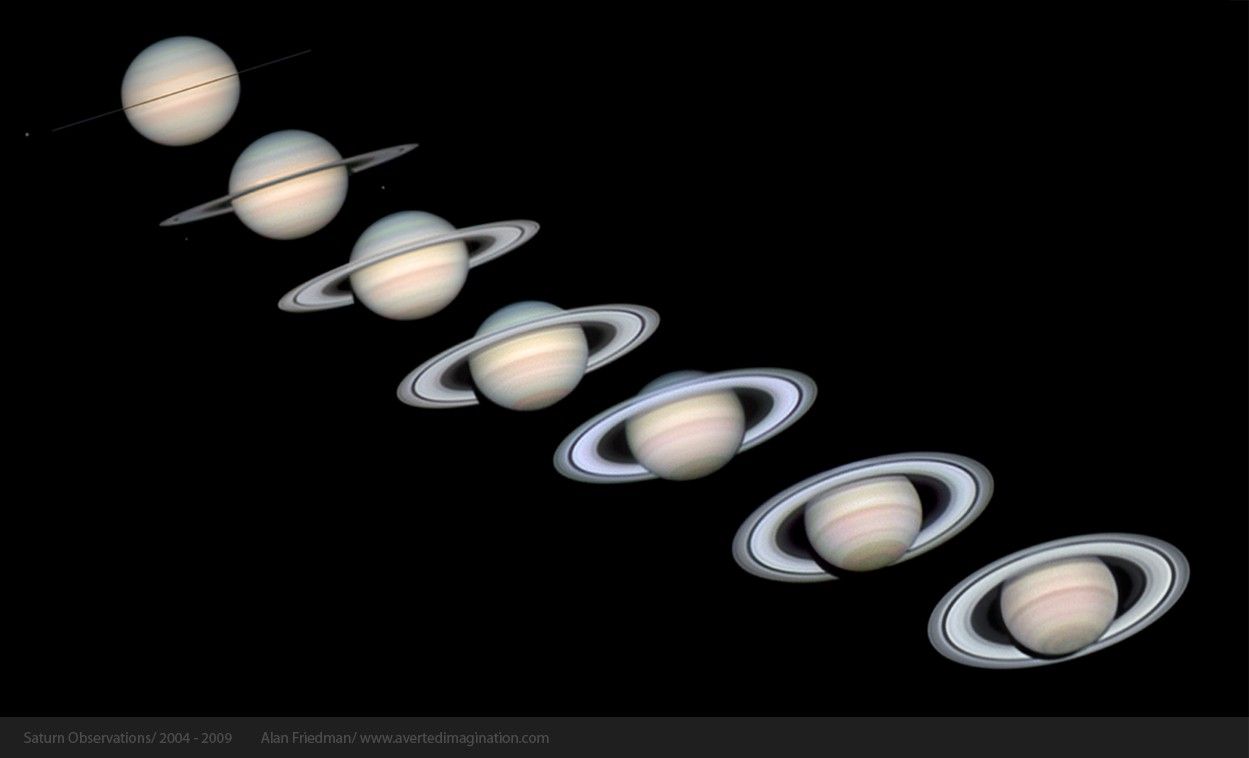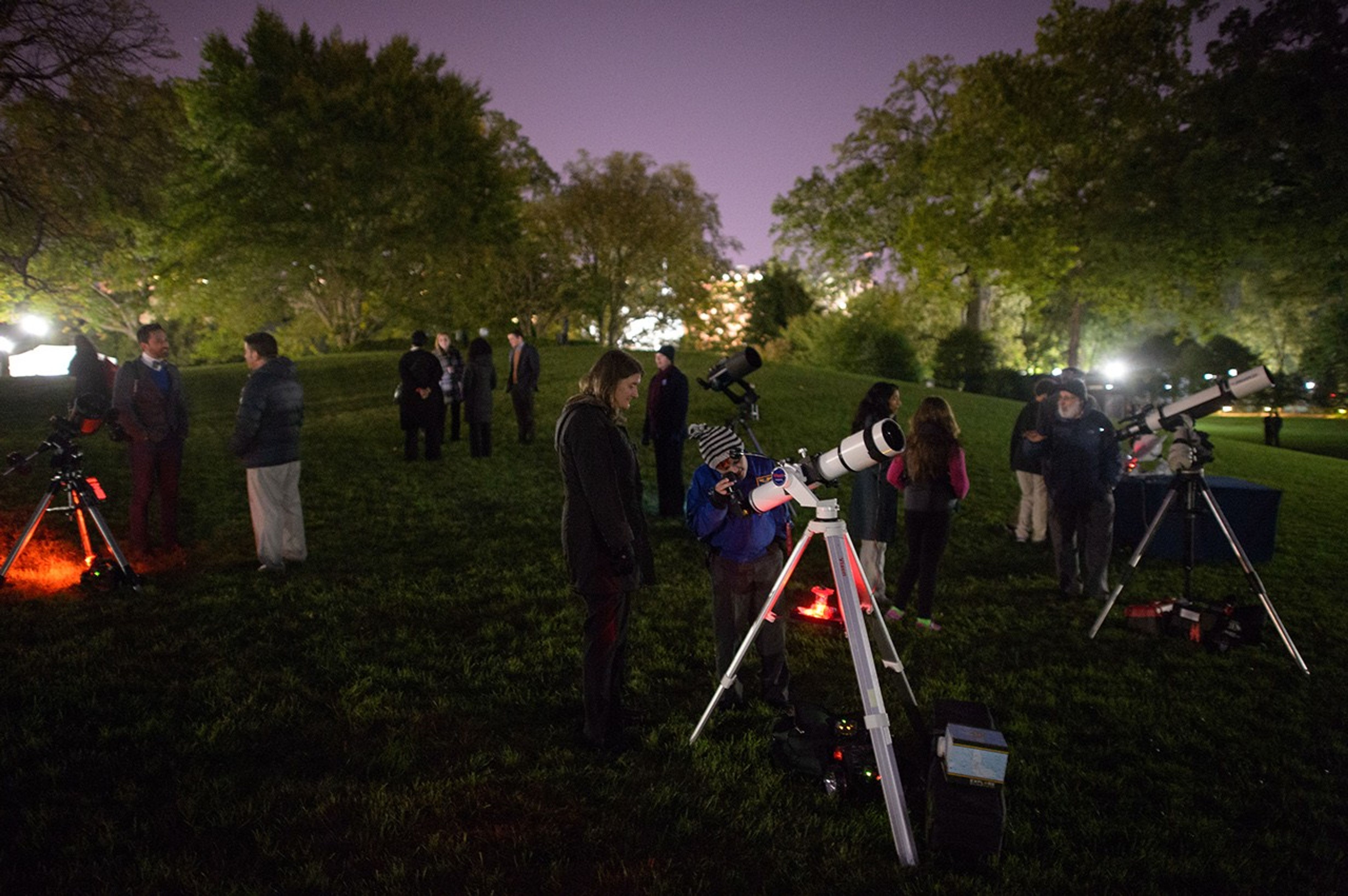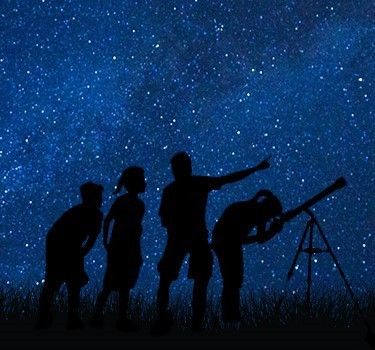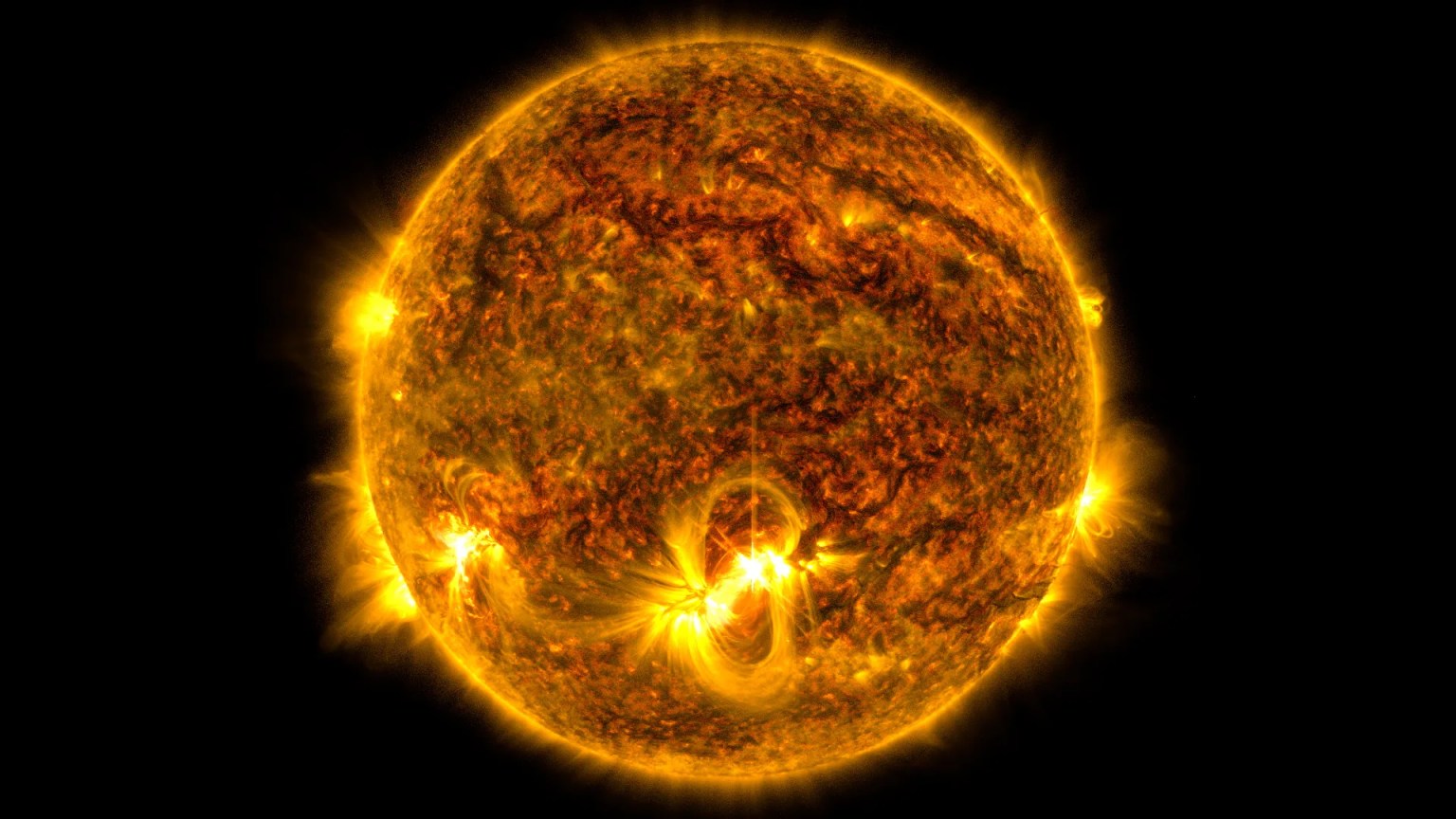Mars and Mercury cozy up, the Leonids sparkle, and Saturn’s rings are…disappearing?
Mars and Mercury get close for a conjunction, the Leonid meteor shower delights, and Saturn’s rings are…disappearing?
Skywatching Highlights
- Nov. 12: A conjunction between Mars and Mercury
- Nov. 16-18: Leonid meteor shower peak viewing
- Nov. 23: Saturn’s rings disappear
Transcript
Mars and Mercury have a cozy conjunction, the Leonid meteor shower delights, and Saturn’s rings are…disappearing?
That’s What’s Up for November.
Conjunction:
Mars and Mercury will cozy up together in the night sky just after sunset on November 12th.
The planets will experience what is known as a conjunction, meaning they appear close together in the sky from our view (even though in real life, Mars and Mercury are well over 100 million miles apart).
But you can see these two long distance pals close together if you look slightly southwest just after sunset in the early evening sky on November 12th.
Mars will be just to the right above Mercury, and you’ll know it’s Mars by its distinctive reddish-orange color.
Leonid Meteor Shower:
The Leonid meteor shower will sparkle across the skies this month, peaking on November 17th.
While the meteor shower stretches from November 3rd through December 2nd, it will be at its most visible late on the night of November 16th into the dawn of November 17th, even into the early morning of November 18th.
Look for meteors coming from the shower’s radiant point within the constellation Leo in the eastern sky.
With dark skies, you might see 10-15 meteors per hour with this shower which happens when we travel through the debris trailing the comet 55P/Tempel-Tuttle.
Saturn’s rings disappear
Saturn’s rings will disappear from view this November!
Saturn orbits the sun leaning at an angle of 26.7 degrees. This means that from our view, its rings shift up and down over time.
On November 23, Saturn will be angled in such a way that its rings face us, and since they are so thin they’ll just disappear from view.
But don’t worry, the rings aren’t gone from view forever. As the planet continues to orbit, its rings will gradually become more visible again.
Conclusion + Moon Phases
Here are the phases of the Moon for November.
You can stay up to date on all of NASA’s missions exploring the solar system and beyond at science.nasa.gov.
I’m Chelsea Gohd from NASA’s Jet Propulsion Laboratory, and that’s What’s Up for this month.
